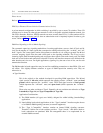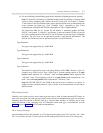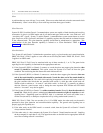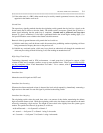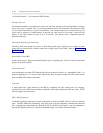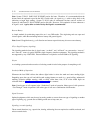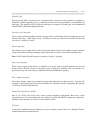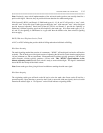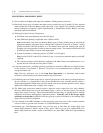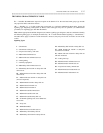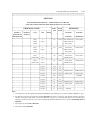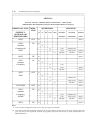C-14 TRUNKING TERMS AND CAPABILITIES
_ ___________________________________________________________________________________________________________________________
_ ___________________________________________________________________________________________________________________________
_ ___________________________________________________________________________________________________________________________
Touch-Tone Signaling
Refer to DTMF.
Trunk Type (or trunk group type)
For DIMENSION PBX, System 85, and the Generic 2 communications system the term ‘‘trunk type’’ is a 2-
or 3-digit number that is associated with certain software routines. These software routines (each trunk
type) provide a unique signaling sequence that enables the trunk circuit pack to interface to a particular
trunk service/feature. The System 75 and Generic 1 term trunk group type is synonymous with the
DIMENSION PBX, System 85, or Generic 2 term trunk type. Some examples for trunk group types include
tie trunk, DID, FX, DMI, etc,.
Type of Dialing
From the originating perspective (line side) the ‘‘Address Signal’’ is either rotary (dial-pulse) or Touch-
Tone (DTMF).
Type of Outpulsing
From the switch perspective (trunk side) the type of digit sending (outpulsing) is determined by trunk group
translations. For the DIMENSION PBX, System 85, and Generic 2, the administration field is referred to as
the ‘‘Trunk Class of Service.’’ For System 75 and Generic 1, it is referred to as the ‘‘Outgoing and
Incoming Dial Type’’.
Universal Trunk Type
Background
Private network PBX tie trunks may terminate on a variety of AT&T and other vendor switches. These
switches may range, in terms of sophistication, from the latest technology (e.g,. Generic 1 and Generic 2) to
earlier first generation stored program control and electro-mechanical switches. Slight differences exist in
the way older and newer technology switches perform the start-dial sequence for E&M trunks. The
Universal Trunk Type was developed to:
• Accommodate these variations in switch technology
• Provide appropriate timing pauses for subnet trunking applications
• Allow easy administration of trunk signaling.
Universal type trunk groups can provide either a Wink or Delay-Dial signal as the outgoing trunk seizure. If
the distant switch does not respond with an off-hook (following the appropriate time interval), then the
address is still sent. Universal is also referred to as ‘‘DO NOT FAIL UPON TIMEOUT’’ but respond by
sending digits. Normally, upon receiving an off-hook from the distant switch, the local switch waits for the
on-hook before sending the address. Failure to receive the on-hook signal will result in call failure with the
user receiving reorder tone.



